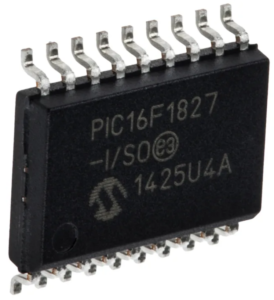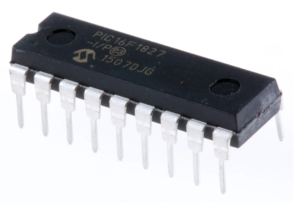Microchip locked MCU PIC16F1827 flash program memory and eeprom data memory reverse engineering starts from crack secured microprocessor PIC16F1827 fuse bit by focus ion beam and copy protective microcontroller PIC16F1827 embedded firmware of binary file or heximal data;

The EC and ECIO Oscillator modes require an external clock source to be connected to the OSC1 pin. There is no oscillator start-up time required after a Power-on Reset or after an exit from Sleep mode in the process of Read Chip TS80C51U2 Flash. In the EC Oscillator mode, the oscillator frequency divided by 4 is available on the OSC2 pin. This signal may be used for test purposes or to synchronize other logic.

The ECIO Oscillator mode functions like the EC mode, except that the OSC2 pin becomes an additional general purpose I/O pin. The I/O pin becomes bit 6 of PORTA (RA6). the process of Read Microcontroller AT87LV51 Software shows the pin connections for the ECIO Oscillator mode when Embedded Microcontroller PIC16F1827 Code Copying.
For timing insensitive applications, the “RC” and “RCIO” device options offer additional cost savings. The actual oscillator frequency is a function of several factors:
- supply voltage
- values of the external resistor (REXT) and capacitor (CEXT)
- operating temperature
- Given the same device, operating voltage and temperature and component values, there will also be unit-to-unit frequency variations if Embedded Microcontroller PIC16F1827 Code Copying. These are due to factors such as:
Normal manufacturing variation difference in lead frame capacitance between package types (especially for low CEXT values) variations within the tolerance of limits of REXT and CEXT to Read MCU ATTINY13A Heximal

- In the RC Oscillator mode, the oscillator frequency divided by 4 is available on the OSC2 pin. This signal may be used for test purposes or to synchronize other logic through the skill of MCU Cracking. Figure 2-5 shows how the R/C combination is connected.
- The RCIO Oscillator mode (Figure 2-6) functions like the RC mode, except that the OSC2 pin becomes an additional general purpose I/O pin. The I/O pin becomes bit 6 of PORTA (RA6) before Embedded Microcontroller PIC16F1827 Code Copying.


